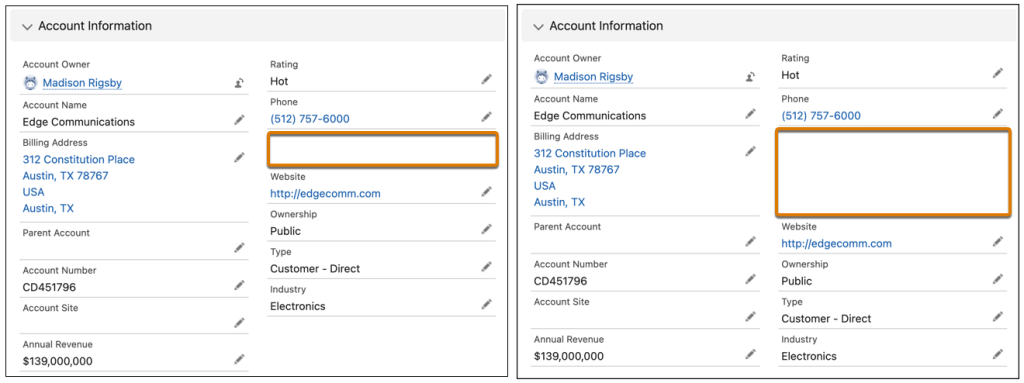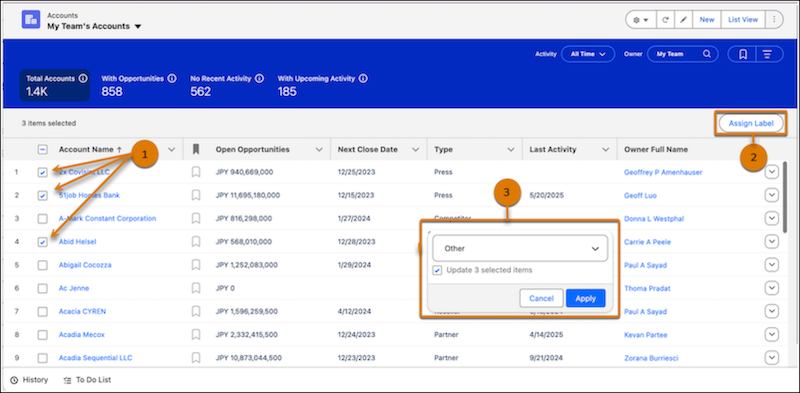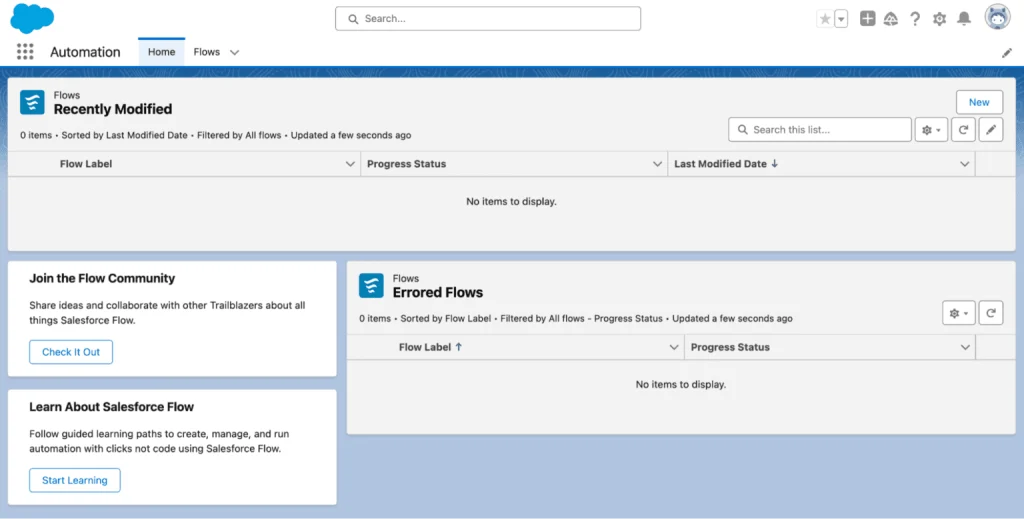Making the most of Salesforce Releases
Summer '24 Key Highlights
As a Salesforce customer, it’s crucial to harness the power of new features and innovations introduced in the platform’s triannual updates. These releases are always packed with enhancements designed to streamline your workflow, boost productivity, and optimise the user experience, keeping you ahead in a competitive landscape.
The Summer ’24 release, going live on June 16th, is no exception. It brings a host of exciting features that can revolutionise how you manage data, configure user access, and interact with the platform.
In this blog, we dive into our team’s top picks for this release:
Field History Made Easier
Understanding data changes is critical for maintaining accurate records and ensuring accountability. The Summer ’24 release simplifies the process of enabling field history tracking. Previously, you had to update each object individually in Object Manager. Now, you can manage field history tracking with a new and improved user interface from Setup, allowing you to toggle between objects on a single page.
User Management Enhancements
This release has some great new features for admins that will make user management significantly easier.
Determine Access Faster with Access Level Summaries
Admins often need to understand various levels of access for users, permission sets/groups, and public groups. The Summer ’24 release introduces easy-to-view access summaries, significantly reducing the need for multiple clicks and deep dives.
Admins can now see:
- User Access Summaries: Determine which permissions a user has (Setup > Select User > View Summary button).
- Permission Set and Permission Set Group Summaries: Identify what permissions a set grants or which groups it is part of (Setup > Permission Set or Setup > Permission Set Group > View Summary).
- Public Group Summaries: Understand where a public group is used in sharing rules, dashboard folders, and list views.
To access these summaries they need to be enabled in Setup > User Management.

Speed Up User Onboarding with User Access Policies
User access policies now let you define access for groups of users all at once, without needing to use code. You can specify a group of users to grant or revoke access to permission-set licences, permission sets, permission-set groups, package licences, queues, and groups.
With the Summer ’24 release, you can create up to 200 active policies, a significant increase from the previous limit of 20. This makes managing user access more efficient and scalable than ever.
Field Alignment for Dynamic Form – Enabled Pages
It would not be a Salesforce release without an update for Dynamic Forms and this was highly requested in the community.
Now you can use the ‘Blank Space component’ to easily customise the layout of your fields in Dynamic Forms.
You can use a blank space by itself to separate fields vertically within a field section or use in conjunction with the field section property ‘Align fields horizontally’.
This helps your lightning record pages with dynamic forms look cleaner and more organised.
FYI: A blank space component is considered a field and counts against the limit of 100 fields per region. It doesn’t count against the component page limit.

Do More with Intelligence Views!
Intelligence views, introduced in recent releases for Leads, Accounts, and Contacts, break up the standard grid lines of list views and act as dedicated workspaces. The Summer ’24 release adds list view actions, allowing access to standard and custom quick actions and enabling multiple records to be updated simultaneously with inline editing.
From the intelligence view, you can now:
- Send an email to an entire list of contacts.
- Change ownership for multiple leads.
- Add a label to or update multiple accounts at once.
If you have not enabled intelligence views across leads, accounts and contacts and want to find out more, please get in touch with our team.

Pipeline Inspection Enhancements
We love pipeline inspection and believe all sales teams (especially sales managers) should be using it. It provides a consolidated view of all opportunities, allowing users to quickly identify which deals are on track, which ones need attention, and where potential risks lie.
Similar to the updates for intelligence views, list view actions are now available for Pipeline Inspection. Users can update multiple records simultaneously with inline editing directly from the view.
With these enhancements, users can:
- Update the close date for multiple deals.
- Add opportunity products to opportunities.
- Create quotes without leaving the Pipeline Inspection view.
You can find out more about setting up Pipeline Inspection here.
Automation Updates
This release places a significant focus on automation, with several new features designed to streamline processes and improve efficiency.
Automation Lightning App:
Access all things automation from the app launcher, rather than in Setup. This is a rare shift from Salesforce bringing backend functions to the forefront by allowing users to see flows, errors, and community-based links within the main application.

Einstein for Flow: (Beta)
A very handy new feature for customers with Einstein 1 Edition or Einstein for Sales, Service or Platform add-on. You can now create workflows using natural language text prompts.
This is helpful base for admins who are unsure where to start with creating flows.
To use this feature you need to ensure you have turned on Einstein generative AI in setup, find and select Einstein for Flow and activate it.
Einstein for Formula:
Previously, Einstein for formulas could explain what a formula did. Now with the new release, it can help fix syntax errors. Click ‘Use Formula Assistant’, and Einstein will provide a suggestion.
Einstein Conversation Insights:
We integrated Einstein Conversation Insights into our Salesforce instance during the last Spring release, when Salesforce offered 10 free licences, and it has proven to be extremely beneficial for our team. Here are some of the key advantages we’ve experienced:
- Provides valuable insights for enhancing sales conversions.
- Reduces the need to review an entire call to find a specific moment
- Automates note-taking and follow-up recommendations.
See Einstein Conversation Insights Demo below:
With the latest Summer ’24 release, Conversation Insights is getting exciting new updates that our team is eager to use:
Generative Insights
Now, you can gain deeper insights into sales conversations by setting up specific topics or scenarios to be detected from voice and video calls, such as pricing and bundles. When these topics or scenarios are detected during the call, they are not just summarised; the sentiment and customers’ thoughts are also included. This helps sales reps and managers tailor their sales strategies based on detailed insights gathered.
Call Collection
Onboarding and training new staff can be time-consuming. Call Collection allows you to create libraries of excellent calls to be shared with teams or groups for best practices and learning. You can also enable others to contribute their calls to the collection.
This feature speeds up the onboarding process by providing new staff with examples of pricing discussions or handling competitor mentions, boosting their productivity and knowledge quickly.
Bonus Feature:
Marketing Cloud Account Engagement: Send Operational Emails in Engagement Studio
You can now send non-marketing emails to opted-out prospects directly from Engagement Studio. Previously, only operational emails could be sent as list emails. This enhancement makes sending operational emails less manual and more efficient.
By familiarising yourself with these new features and incorporating them into your daily Salesforce use, you can ensure your organisation stays efficient, competitive, and ready to harness the full power of the Salesforce platform. If you need assistance setting up any of these features, please get in touch with our team.



